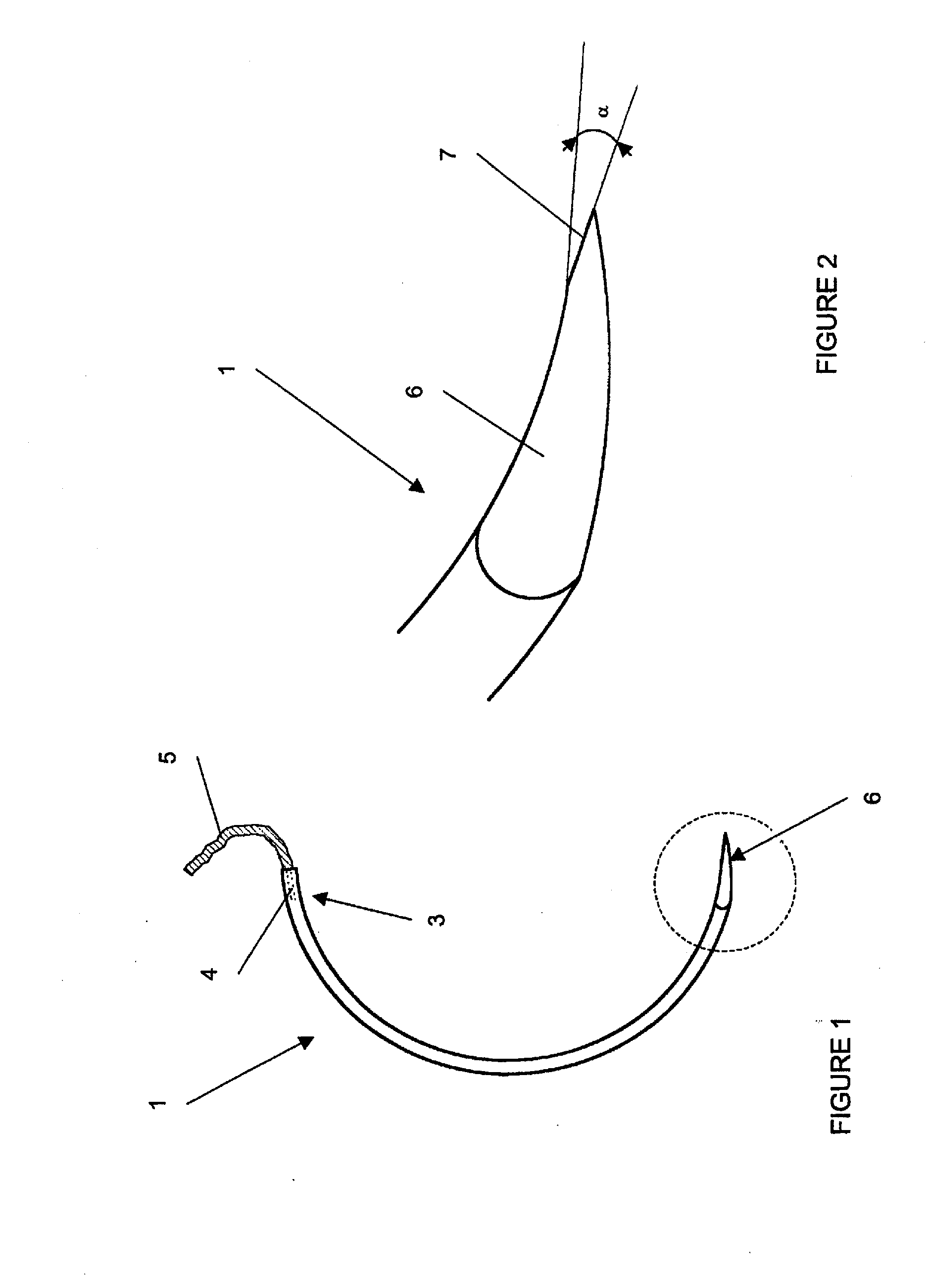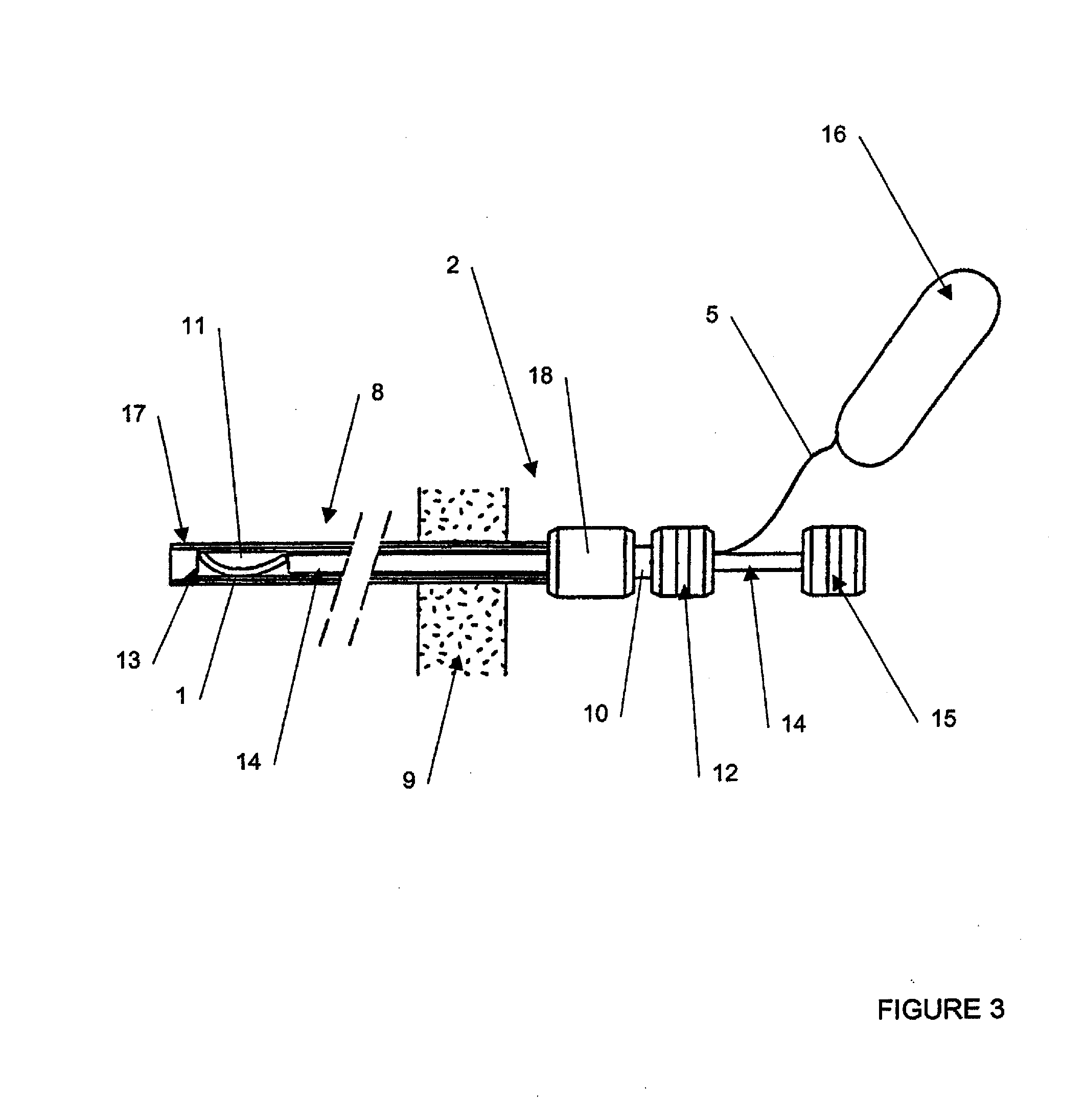Hyper-Elastic Needle
a needle and elastic technology, applied in the field of surgical needles, can solve the problems of irreparable the risk of damage to the tapered point of the needle inside the cannula,
- Summary
- Abstract
- Description
- Claims
- Application Information
AI Technical Summary
Benefits of technology
Problems solved by technology
Method used
Image
Examples
Embodiment Construction
[0037]FIGS. 1 and 2 show a needle 1 made of a hyper-elastic alloy based on nickel (Ni) and titanium (Ti) and which, after the alloy has been treated, has two distinct states.
[0038]In the first state, the needle 1 can be forced into a roughly elongate position so as to be arranged inside a cannula or applicator 2.
[0039]In the second state, that is to say when the stress is removed, the needle 1 is shaped into a profile in the shape of an arc of a circle for use at the site of the surgery.
[0040]The switch from the first state to the second is inherent in the characteristics of the alloy which is treated so that it has characteristics of superelasticity or hyper-elasticity.
[0041]The composition of the nickel / titanium alloy varies from 54% to 58% nickel, the remainder being titanium, that is to say from 42% to 46%. Other elements such as chromium (Cr), iron (Fe) and zirconium (Zr) may also be added in very small percentages to modify either the transformation temperature or the hardness...
PUM
 Login to View More
Login to View More Abstract
Description
Claims
Application Information
 Login to View More
Login to View More - R&D
- Intellectual Property
- Life Sciences
- Materials
- Tech Scout
- Unparalleled Data Quality
- Higher Quality Content
- 60% Fewer Hallucinations
Browse by: Latest US Patents, China's latest patents, Technical Efficacy Thesaurus, Application Domain, Technology Topic, Popular Technical Reports.
© 2025 PatSnap. All rights reserved.Legal|Privacy policy|Modern Slavery Act Transparency Statement|Sitemap|About US| Contact US: help@patsnap.com



